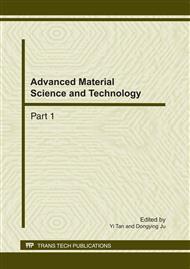p.223
p.227
p.231
p.235
p.239
p.243
p.247
p.251
p.255
The Effect of Strain Rate on the Plastic Deformation Mode of CP-Ti during Surface Nanocrystallization
Abstract:
The effect of the strain rate on the surface nanocrystallization of titanium is investigated both theoretically and experimentally in this paper. The strain rate variation and stress distribution from surface to the interior of titanium during shot peening are estimated firstly using finite element method. Then shot peening experiment is carried out on a commercially pure titanium (CP-Ti) plate, and the obtained surface microstructures is characterized by transmission electron microscopy (TEM). Combining theoretical simulations and experimental observations, the effect of strain rate on the strain accommodation mechanism and plastic deformation mode are discussed. It is concluded that the strain rate and stress achieve the highest at the top surface layer of CP-Ti, and the strain rate decrease dramatically from the surface to the interior. The strain rate at the top surface layer is up to 104 s-1, which leads to superplastic deformation of Ti. There is no mechanical twin in the surface layer, instead, deformation lamella and adiabatic shear bands are the dominating microstructures. By means of rotation recrystallization, those deformation bands evolve to nanocrystallines.
Info:
Periodical:
Pages:
239-242
Citation:
Online since:
February 2011
Authors:
Price:
Сopyright:
© 2011 Trans Tech Publications Ltd. All Rights Reserved
Share:
Citation:


